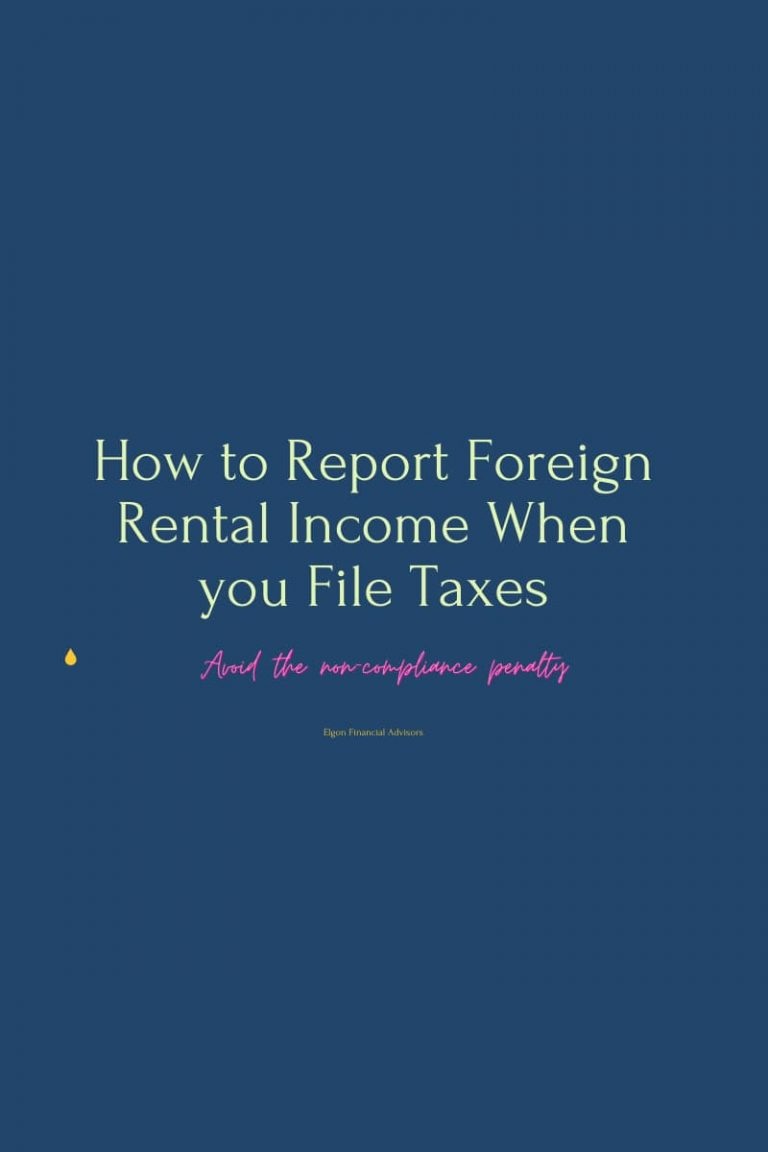What is Equity Compensation? In this post, I will help you understand equity compensation structures, tax implications, and specific planning strategies.
Additionally, consider how to approach this if you are an immigrant or foreign national on a work visa. I’ll touch on the types of equity compensation I see with clients.
In follow-up posts, I’ll discuss planning opportunities for those who plan to leave the US at some point with equity compensation and address specific questions in this space.

Overview Of Equity Compensation And Its Growing Importance
Many workers in tech receive a portion of their compensation in the form of equity.
Equity comp is paid out in the future, so there is always some level of risk of not getting everything, based on when you depart.
For foreign nationals on work visas, your most significant risk is losing your job and having to leave the country in 60 days.
But it’s a great way to build wealth.
What Is Equity Compensation? A 101 Guide
Definition And Basic Concepts
Equity compensation means receiving company shares or share options as part of total compensation.
There are some key terms you want to understand. There will be more later.
Grant – An allocation of company shares (public company) or stock options given to an employee.
Vesting – When shares vest, you gain control. This is based on a certain amount of time passing. For example, if the vesting schedule is 4 years, then you gain access to 25% of the shares every year. What happens after vesting depends on the type of shares.
Exercise – Means to purchase shares at a set price.
Grant price or strike price – The fixed cost at which you’ll pay for a stock option when you exercise to own it.
Fair market value – This is the price of the stock on the day it vests.
Why Do Companies Offer Equity Compensation?
Offering stock or stock-based instruments aligns employee incentives with company growth. The faster the company grows, the more valuable the shares become for the employee. The type of shares determines the final value.
For the company, it’s a way of attracting and retaining talent. It also enables the company to reduce payroll expenses, thereby enhancing its cash flow.
Based on the equity’s structure, it may allow a company to save on taxes.
What Are The Unique Considerations For Foreign Nationals On Work Visas?
Work Visa Status And Employment Continuity
Most equity compensation plans require continuous employment at a US entity to remain valid. Leaving a job could mean forfeiting the equity comp, and so you want to time that carefully if you are going to make changes.
Switching jobs often means higher levels of equity compensation. Still, when on a work visa, you want to be careful not to get caught in the complexity of visa regulations that could impact your visa journey. The new employer must be willing to sponsor your visa.
If on an approved 1-140, which is the first step to getting a green card, be careful, to avoid losing that status when you switch as it could set you back on your green card journey, even if the new employer is offering you more.
If you are forced to leave the country abruptly, it can mean forfeiting a significant portion of your future income in the form of unvested options or ongoing RSUs.
Cultural And Financial Literacy Differences and Equity Comp
If you are new to the US, keep in mind that financial systems and investment vehicles may differ from those in your home country. So, it’s essential to bridge the gaps around US equity plans.
Home Country vs. US Tax Obligations
If you are not a US tax resident, the taxation of the equity will differ significantly for you, as there will be specific cross-border tax implications.
This, along with tax treaties, will be discussed in a future post. But specialized tax advice will be key.
What Are The Main Types Of Equity Compensation?
I’ll discuss NSOs, ISOs, RSUs, ESPPs, and Performance Shares. Each has something unique in its structure, tax treatment, and other defining characteristics.
Non-Qualified Stock Options (NSOs)
NSOs are a type of stock option that gives you (the employee) the right to purchase a specified number of shares of the company at a pre-determined future date.
Once you own them, you can choose whether to sell them or hold on.
You have a deadline to exercise the shares, and if you go past that deadline, the options will expire.
The key thing to understand with NSOs is tax considerations.
No taxes at grant, since what you are getting is the right to purchase the shares in future.
No taxes at vesting since you don’t own the shares until you exercise.
When you exercise, you pay ordinary income tax on the difference between the grant price and the exercise price (FMV).
This is known as the bargain element. You have to come up with the money to exercise, but you may be able to do a cashless sale, where the company holds back some of the cash to cover the buying price.
For example,
John exercises 1000 shares of company XYZ at $30 a share. Assume the grant price was $10. The bargain element on which he has to pay ordinary income taxes is 1000 * (30-10) = $20,000.
This number is reported on his W2 as income.
- Future taxes will depend on when he sells. If he sells the shares before one year is over from the exercise date, he’ll pay ordinary taxes on the profit, but if he waits for a year before selling, then he’ll pay the capital gains tax rate on his gains.
What Are The Common Pitfalls & Timing Of Exercising For Non-Qualified Options?
The most significant risk with NSOs is that their price is tied to market risk, and so it’s possible for the options to expire if the market price never gets below the grant price. If they are a part of your compensation, you could end up losing out.
If you leave a company with vested NSOs, you’ll typically have about 90 days to exercise the shares before they expire. You may be able to negotiate something different with the company.
So, negotiate carefully when you first get the job offer and ensure complete understanding of the grant docs.
Incentive Stock Options (ISOs)
Incentive stock options are commonly used to attract and retain top talent due to the preferential tax treatment. Hence, it is widely used in private companies.
The tax treatment differs significantly from that of NSO.
At grant, the bargain element (the spread) may be included in the Alternative Minimum Tax calculation (AMT), and trigger additional taxes. This is particularly common among those in higher income brackets.
If you hold onto the shares and sell them in the future, the tax treatment will depend on meeting certain conditions as follows.
Qualifying disposition. You pay the long-term capital gains tax rate on any gains if you hold the shares for two years from the grant date and one year from the exercise date.
Disqualifying disposition. You pay the short-term capital gains tax rate (ordinary income rate) if you miss one of the two holding periods above.
ISOs typically have a 10-year time frame before they expire, but some companies may have different clauses if you leave.
Typically, you have to exercise them within 3 months, otherwise they turn to NSOs and lose their preferred tax treatment.
What Is Section 83(b) Election, And How Does It Work In Equity Comp?
You may be able to exercise your shares early. This leads to minimal taxes. It must be done within 30 days of receiving the shares. You need to file Form 83(b) with the IRS as soon as possible.
Restricted Stock Units (RSUs)
RSUs are common as part of compensation. They are shares granted to an employee, but don’t become active (fully owned) until some conditions are met. Hence, the name ”restricted” shares.
On the day they vest, you own them fully. They are then included in your W-2 as ordinary income, based on the price on the vesting day.
The typical vesting schedule is 25% every year, so employees are fully vested over 4 years. However, different companies may have different schedules, such as monthly or quarterly vesting, after the first year.
The specific details are in the grant documents.
The shares become yours on the vesting day, and you choose what to do with them after that – sell or hold.
If you leave a company, you lose any shares that were not vested, which is the same as losing unearned income.
Due to their vesting and tax treatment, RSUs are perceived as simpler than stock options.
Employee Stock Purchase Plans (ESPPs)
This is a stock plan that allows employees to buy company shares at a discount, which can be as high as 15%. You contribute to the purchase via payroll deduction, and at the end of the offering period (pre-determined), the company will purchase those shares for you and deposit them in your account.
There are certain IRS restrictions, such as not being able to spend more than $25,000 per year; however, generally, almost everybody in the company can participate.
What’s The Tax Treatment Of ESSPs?
The tax treatment is based on the length of time you hold the shares. We’ll assume this is a qualified plan.
Qualified Disposition: The amount subject to the ordinary income tax rate will be lower if the sale is more than one year from the purchase date and the offering date is more than two years (date the employer allowed you to start the ESSP contributions)
Disqualified disposition: The amount reported on W2 for taxation is higher because you did not meet the holding period above.
If you leave the company before the offering period is over, the company will refund your money with no interest. But if you have shares you purchased but have not sold, those are yours.
If you leave the country, you still own the ones you’ve purchased, but with different tax considerations.
Performance Shares/Performance Stock Units
These are granted in the form of Performance Stock Units (PSU) or Performance Stock Awards (PSA).
Essentially, they are a promise to give you future shares based on individual performance or the company’s performance.
How performance triggers and vesting can be more complex, and each company will have a unique formula.
When granted, they are taxed as ordinary income, and the total value is added to the W-2.
Once you own them, you can keep them long-term (pay long-term capital gains when you sell them) or sell them in less than a year and pay short-term capital gains on any gains from the grant date.
Since PSAs are granted upfront, they do allow the option of using the section 83(b) election, allowing you to pay the taxes upfront.
However, you must make this election within 30 days of the grant.
What To Know About Equity Compensation In A Private Company.
The initial part of the equity comp works the same, whether it’s a private or public company. You have to wait for the shares to vest before you exercise them and subsequently sell them.
With a private company, you are not able to sell the shares unless there is a private market for them.
Therefore, your shares only become real money when a liquidity event occurs. This is described as a double-trigger event for RSUs. Examples of liquidity events.
Company IPO
The company decides to buy back some of the shares
You sell on secondary private markets.
So, when considering exercising NSOs and ISOs, consider that the company may never go private, and you could lose everything you put into it.
Other Forms Of Equity Vehicles
Other less common forms of equity compensation include Phantom stock, Stock Appreciation rights, and ESOP.
Understanding Vesting Schedules And Key Dates With Equity Comp
What Are The Different Types Of Vesting With Equity Comp?
Vesting is different for each type of grant and falls into the following.
Time-based – happens over a specific period.
Performance-based vesting is based on meeting specific company or individual goals over a certain period.
Cliff vesting vs. graded vesting. Cliff vesting is when the full amount vests after a certain period. For example, a one-year cliff means that after one year, the whole grant vests.
Graded-vesting – Means the shares vest over time. For example, Google’s GSUs vest over 4 years, with the first 25% vesting in the first year, and the remainder vesting monthly over the next 3 years. I have also seen a case where the GSUs (Google’s version of RSUs) start vesting monthly, a few months after the grant, and especially if they are a refresh.
Importance Of Tracking Vesting Milestones
Equity Comp has been described as the golden handcuffs to keep employees tied to a company, especially as they rise.
Therefore, it’s essential to keep track of your equity compensation grants, noting when each vests, the type, and the tax implications of each action.
It will significantly assist with tax planning, as it enables you to determine when to exercise and when to sell, if applicable. also sell. There may be some apps that can be used for this tracking, or you can simply use a spreadsheet.
This is particularly critical for foreign nationals on work visas, especially in unstable work environments.
Keep in mind where you are on your immigration journey. For example, if your goal is to work for a few years and then leave, you may focus on converting your shares into cash as quickly as possible while minimizing taxes, thereby giving you more control.
Forfeiture Risks
Under each type, I’ve discussed what happens when you leave a company. Most of it is generic, but you want to ensure you understand your specific company’s perspective on things. Get the grant documents and read through the implications of each action.
When I start working with a client who has any equity compensation, I typically ask them for all the grant documents, even though it sometimes feels like overkill.
Having this allows us to prepare for any eventuality, in addition to some serious tax planning.
Tax Implications And Planning With Equity Comp
Federal And State Taxation
As described in each section, each type of stock plan differs in how the shares are taxed. The taxation applies to both federal and state taxes.
It’s also important to keep track of how companies report taxes, as mistakes will lead to double taxation.
For example, I have seen cases where an employee receives a 1099 after selling RSUs without a cost basis being included. The initial grant would have been taxed as W-2 income; therefore, missing this means double taxation unless corrected immediately.
Alternative Minimum Tax (AMT)
The alternative minimum tax applies to ISO holders when they exceed the AMT threshold, which is relatively low.
For 2025, it’s about $88,000 filing single and $137,000 filing married. Exercising ISOs is a taxable event that triggers the Alternative Minimum Tax (AMT).
The company will never withhold AMT taxes, so plan accordingly if you anticipate owing AMT taxes. It’s usually 26% or 28% based on income.
With careful tax planning, we can aim to keep you below the AMT threshold, if possible, or ensure that we manage it effectively without destroying your cash reserves.
In the future, it’s possible to claim the AMT credits, but it cannot be in the same year that you generate more AMT taxes. Managing this carefully will ensure you don’t lose out, but you will be able to get your taxes paid.
Cross-Border Tax Issues With Equity Comp
This will apply if you leave the country with vested and exercised shares. It also applies to US expats with equity compensation in the US, now living overseas.
I’ll address this in future posts.
Withholding And Estimated Taxes
Companies often withhold taxes when RSUs vest or NSOs are exercised. Companies will typically withhold enough to pay taxes on them (usually the supplemental tax rate – 22% if your income is under a million and 37% if over).
For high-income earners, this is not enough, and you are likely to owe taxes, and possibly have a penalty attached to this. The easiest solution is to run estimated tax projections and have more withheld regularly.
Strategies To Manage And Maximize Equity Compensation
Diversification
The risk of having too much net worth tied up in one company is one of the biggest risks, I see, with equity compensation.
One solution, especially with RSU, is to sell everything as soon as it vests and invest in globally diversified assets.
Some companies will try to make this a little bit easier for you. For example, Google provides you with the ETP (employee trading plan), which allows you to sell shares without any concern about trading windows systematically.
With NSOs, due to tax treatment, you may have to hold on a bit longer.
Balancing Near-Term And Long-Term Goals
If you are uncertain about how long you are going to be in the US, you’ll need to consider carefully exercising shares, especially where you have to bring cash to the table.
Weigh potential gains against tax rates and job security.
However, if you end up owning the shares, you must complete your estate planning to ensure this is treated fairly in terms of taxes.
The biggest concern is that a non-resident could have parts of his or her estate taxed at about 40%, with only a $60,000 exemption.
Planning For Volatility With Euity Comp
If you own a single stock, be prepared to deal with your net worth fluctuating as the stock price goes up and down.
In the future, I’ll discuss strategies to mitigate the psychological burden of market swings.
I’ll also have a post discussing what to do if you are a foreign national on a work visa or you are a US citizen leaving the US.
Are You Worried About Making Mistakes With Your Equity Comp?
Why Professional Guidance Is Key
Equity compensation is a complex and potentially overwhelming process that can become a nightmare if not managed properly. It can also lead to unnecessarily high taxes and complicate your life.
This is best undertaken with the guidance of a financial advisor, planner, or tax professional to navigate vesting schedules, minimize tax burdens, and plan for the future.
With proper planning, equity compensation can be a powerful wealth-building strategy.
Looking to optimize your equity compensation, reach out.
Free Financial Assessment
If you’re not ready to start, that’s okay. However, please stay up to date with our regular updates by email or by joining us here. Sign Up Here.

6 Things to Do
When Starting A Job on H-1B Visa
You are starting a new job on a work visa, there are some critical things, that will set up for financial success in the first 3-6 months. Download the free guide below for the detailed list!
We never spam. By signing up you’ll also receive access to future resources right to your inbox.
Disclaimer: This article is provided for general information and illustration purposes only. Nothing contained in the material constitutes tax advice, a recommendation for the purchase or sale of any security, investment advisory services, or legal advice. I encourage you to consult a financial planner, accountant, and/or legal counsel for advice specific to your situation. Reproduction of this material is prohibited without written permission from Jane Mepham and all rights are reserved. Read the full disclaimer here.






